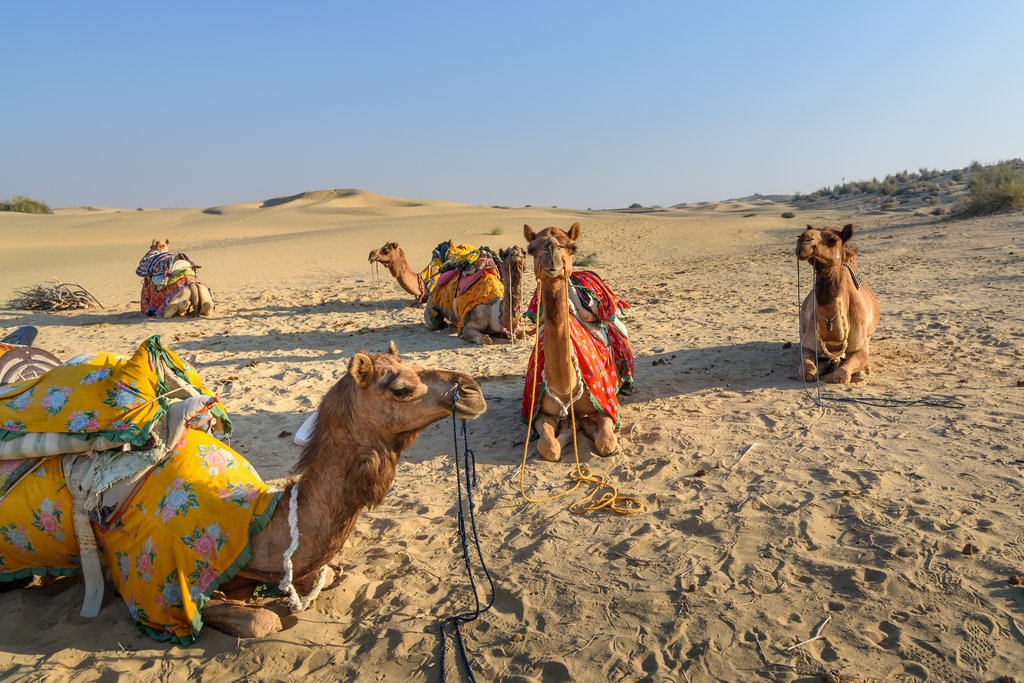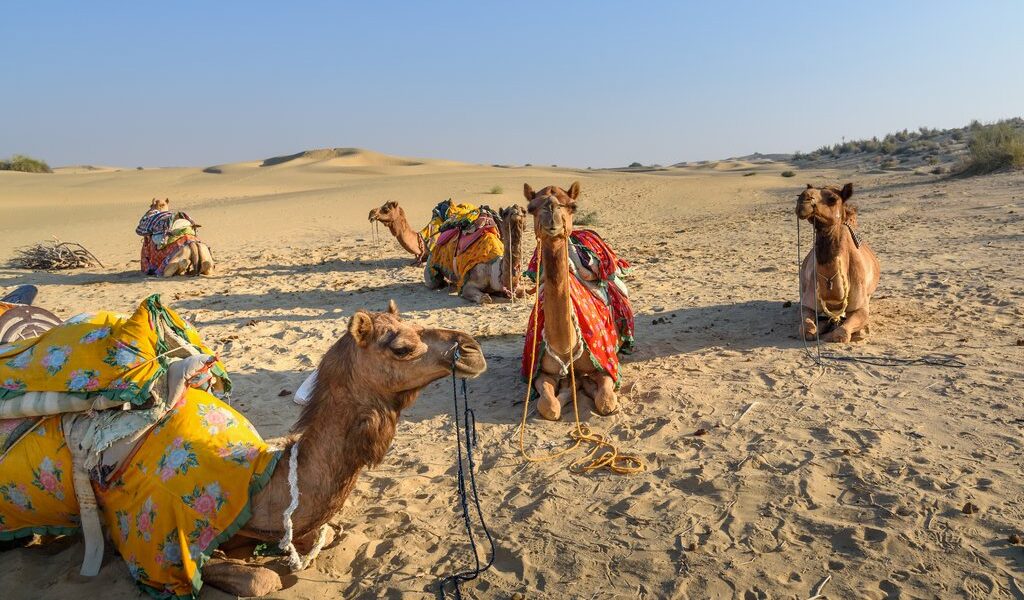
By September, the monsoon is starting to dry up in parts of India. With light rain in Delhi and Rajasthan and fewer crowds than in the winter, this is a great month to visit the attractions of the Golden Triangle. Hot spots like the Taj Mahal will be quiet, with great visibility, and you can expect shoulder season prices in most of the country.
## India in September: A Comprehensive Travel Guide
September in India presents a unique travel window, a shoulder season nestled between the receding monsoon and the approaching peak tourist season. This transitional period offers a blend of pleasant weather in certain regions, fewer crowds at popular attractions, and potentially more affordable prices. This guide provides a detailed overview of what to expect when traveling to India in September, covering weather patterns, crowd levels, suggested destinations, activities, and even festive events that might coincide with your visit.
### Weather Patterns Across India in September
India’s vast geographical expanse means that September weather varies significantly from region to region. Understanding these variations is crucial for planning your itinerary and packing appropriately.
In and around **Delhi**, September marks a departure from the intense heat and humidity of the preceding months. While still warm, the weather becomes noticeably drier. On average, you can expect only about six days of rainfall throughout the entire month. Daytime highs hover around a toasty 93°F (34°C), while nighttime temperatures drop to a more comfortable 77°F (25°C). The dry conditions and slightly lower temperatures make it a relatively pleasant time to explore the historical sites and bustling markets of the capital. The weather in **Rajasthan** mirrors that of Delhi, with high temperatures and sparse rainfall. The desert landscapes of Rajasthan will be relatively dry, which makes for easier exploration.
However, venturing eastward towards **Kolkata** and the broader region of **West Bengal** tells a different story. The monsoon season remains firmly entrenched in this part of the country during September. Expect an average of approximately 14 days of rainfall, which can significantly impact travel plans. The humidity levels are also high, so be prepared for muggy conditions. Similarly, the southwestern coastal states of **Kerala**, **Mumbai**, and **Goa** continue to experience wet weather throughout September. While the intensity of the monsoon might be gradually decreasing, consistent rainfall is still likely, affecting outdoor activities and travel logistics.
A slight reprieve from the rain can be found further south in **Tamil Nadu**. September represents a brief interlude between the retreating **Southwest monsoon** and the imminent arrival of the **Northeast monsoon**. This lull in rainfall provides a window of opportunity to explore the region’s magnificent temples and cultural treasures before the heavier rains resume.
The mountainous regions of the eastern **Himalayas**, encompassing areas such as **Arunachal Pradesh** and **Sikkim**, remain susceptible to rainfall during September. Landslides and road closures can occur, potentially disrupting travel plans. It’s imperative to monitor weather forecasts and road conditions before embarking on any journeys into these regions.
In contrast, the northernmost regions of **Kashmir** and **Ladakh** enjoy relatively dry and pleasant weather in September. The intense cold of winter is yet to arrive, making it an ideal time for trekking, sightseeing, and experiencing the stunning landscapes of these high-altitude regions. The skies are generally clear, offering breathtaking views of the snow-capped peaks.
### Crowd Levels and Costs in September
One of the primary advantages of traveling to India in September is the absence of the overwhelming crowds that characterize the peak tourist season, which typically begins in October. With the monsoon season receding and the weather gradually improving, many travelers have already returned to their routines, resulting in fewer tourists at popular destinations. This creates a more relaxed and enjoyable travel experience.
September falls squarely within the “shoulder season,” a period between the high and low seasons. This translates to several benefits for budget-conscious travelers. Accommodation prices are generally lower than during peak season, and you may find better deals on flights and transportation. The reduced competition for bookings also means that you have a wider selection of hotels and tours to choose from.
### Destination Recommendations for September
Given the varying weather conditions across India in September, careful consideration should be given to selecting the right destinations.
The areas surrounding **Delhi** are particularly appealing during this month. The weather is conducive to exploring iconic landmarks such as the **Taj Mahal**, which will be less crowded than usual. Visibility is typically good, allowing for stunning photographs and unobstructed views. The magnificent palaces and forts of **Rajasthan** also offer a rewarding experience during this time. The reduced crowds translate to shorter queues and a more intimate appreciation of the region’s rich history and architectural grandeur.
Alternatively, consider venturing south to **Tamil Nadu** to discover its awe-inspiring temples and cultural heritage before the arrival of the Northeast monsoon. The brief respite from the rains provides an opportunity to explore the region’s vibrant cities and historical sites without the hindrance of heavy downpours.
For those who wish to combine a visit to Tamil Nadu with a trip to **Kerala**, it’s important to be aware that Kerala remains quite rainy until December. However, towards the end of September, the rains tend to become more intermittent, making sightseeing somewhat easier. Be prepared for occasional showers and pack accordingly.
### Activities to Enjoy in September
The drier weather in many parts of India during September makes it an excellent month for urban exploration and experiencing the highlights of North India. The attractions of the **Golden Triangle** (Delhi, Agra, and Jaipur) are particularly photogenic at this time of year.
If you plan to visit the **Taj Mahal**, it is advisable to arrive early in the morning. This will not only allow you to witness the sunrise over this iconic monument but also help you avoid the long queues and enjoy cooler temperatures.
**Delhi** itself offers a plethora of things to do. In addition to well-known landmarks like the **Red Fort**, the city boasts a wealth of historical attractions, including the serene **Lodhi Gardens**, the towering **Qutb Minar**, and the majestic **Humayun’s Tomb**. September provides a pleasant climate for wandering through the narrow streets of **Old Delhi**. Exploring the bustling **Chandni Chowk** market is a must, where you can purchase local goods, sample the city’s famous street food, and immerse yourself in the vibrant atmosphere.
If your travels take you to Rajasthan, consider embarking on a camel safari through the **Thar Desert**, departing from the town of **Jaisalmer**. This offers a unique and unforgettable experience of the desert landscape.
For those heading to Tamil Nadu, some of the most interesting sites to see include the ancient temples at **Madurai** and **Trichy**, the former French colonial city of **Pondicherry**, and the experimental spiritual commune at **Auroville**.
If you decide to include Kerala in your itinerary, a tour of the **Kerala backwaters** by traditional wooden houseboat is highly recommended. This provides a relaxing and scenic way to experience the region’s unique waterways and lush vegetation.
### Festivals and Events in September
September in India is often a time of vibrant festivals and cultural celebrations. However, it is important to note that the dates of religious events can vary each year, depending on the lunisolar calendars used on the subcontinent.
In Kerala, the significant harvest festival of **Onam** typically takes place around this time. This joyous occasion is celebrated with elaborate floral decorations, thrilling boat races, lively singing and dancing, and elaborate feasts served on banana leaves in the traditional South Indian style. To fully experience Onam, consider visiting any Keralan town or city, such as **Trivandrum** or **Kochi**.
**Navaratri** is another prominent festival that often falls in September. This nine-day celebration is dedicated to the Mother Goddess (Shakti) and her various manifestations. In Delhi, Navaratri is observed with **Ramlila** plays, which are traditional folk performances of the sacred Sanskrit epic, the Ramayana.
If you happen to be in Mumbai during September, you might have the opportunity to witness **Ganesh Chaturthi**, an 11-day festival honoring the birth of the elephant-headed god Ganesh. At the culmination of the festival, statues of Ganesh are paraded through the streets and immersed in the sea. This festival is extremely popular, and the city tends to get very crowded, so it’s advisable to make travel and accommodation arrangements well in advance.
By carefully considering the weather conditions, crowd levels, and festival dates, you can plan an unforgettable trip to India in September.
B-1188

